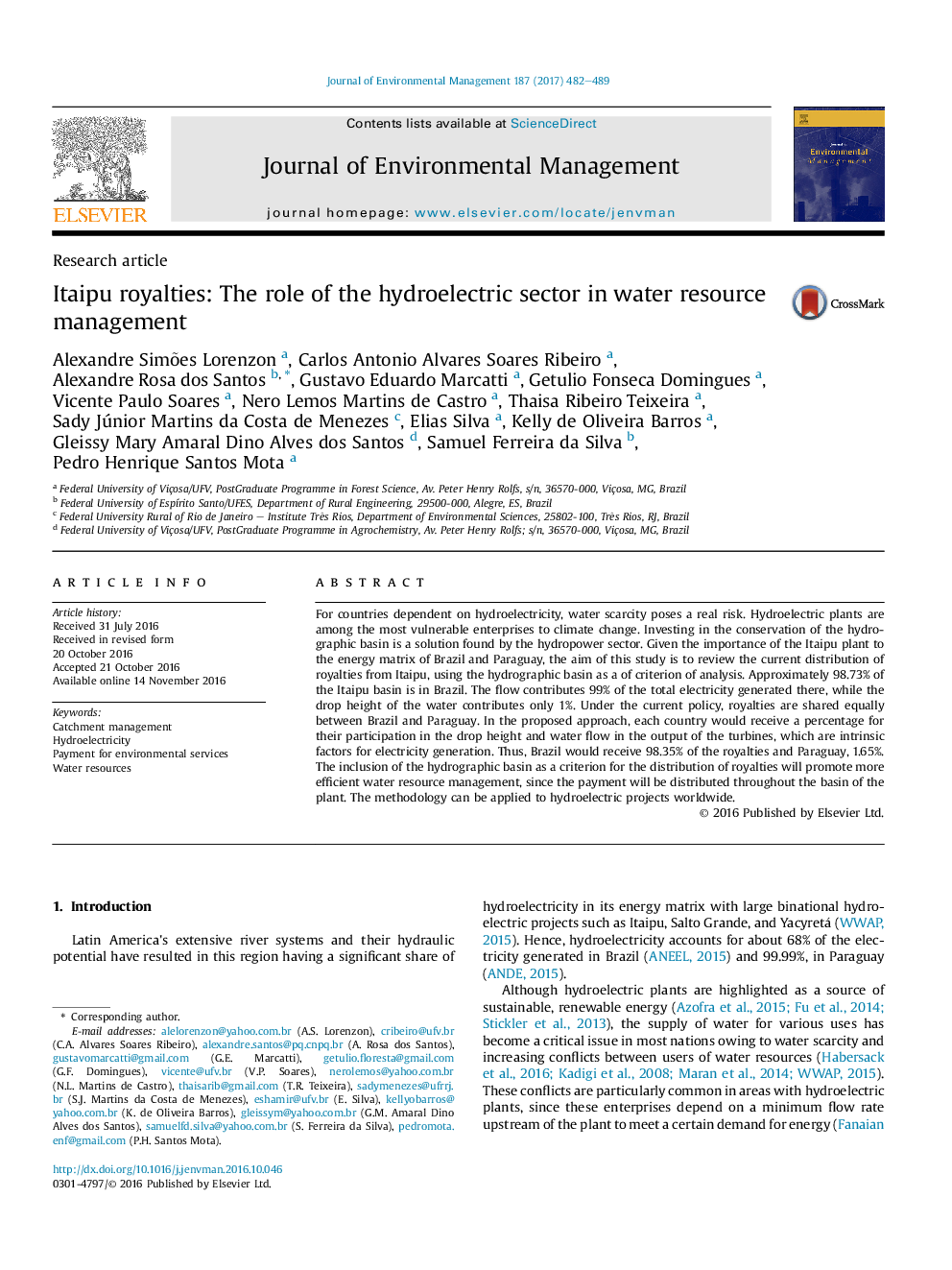| Article ID | Journal | Published Year | Pages | File Type |
|---|---|---|---|---|
| 5117397 | Journal of Environmental Management | 2017 | 8 Pages |
â¢We propose a review of the current distribution of Itaipu royalties.â¢Each country should receive a percentage related to height and flow of water.â¢Brazil would therefore receive 98.35% of the royalties and Paraguay 1.65%.â¢The methodology can be applied as a payment for environmental services.
For countries dependent on hydroelectricity, water scarcity poses a real risk. Hydroelectric plants are among the most vulnerable enterprises to climate change. Investing in the conservation of the hydrographic basin is a solution found by the hydropower sector. Given the importance of the Itaipu plant to the energy matrix of Brazil and Paraguay, the aim of this study is to review the current distribution of royalties from Itaipu, using the hydrographic basin as a of criterion of analysis. Approximately 98.73% of the Itaipu basin is in Brazil. The flow contributes 99% of the total electricity generated there, while the drop height of the water contributes only 1%. Under the current policy, royalties are shared equally between Brazil and Paraguay. In the proposed approach, each country would receive a percentage for their participation in the drop height and water flow in the output of the turbines, which are intrinsic factors for electricity generation. Thus, Brazil would receive 98.35% of the royalties and Paraguay, 1.65%. The inclusion of the hydrographic basin as a criterion for the distribution of royalties will promote more efficient water resource management, since the payment will be distributed throughout the basin of the plant. The methodology can be applied to hydroelectric projects worldwide.
Graphical abstractDownload high-res image (276KB)Download full-size image
